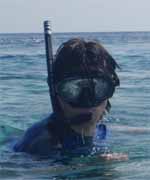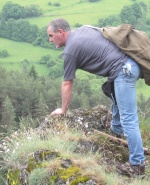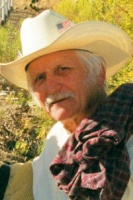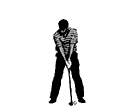Hiroshima pine
+6
Rob Kempinski
bonsaistud
Harleyrider
John Quinn
Kev Bailey
Phil S
10 posters
Page 1 of 1
 Hiroshima pine
Hiroshima pine
Has it been noted before that the Hiorshima pine ( a very old and valuable bonsai, named due to surviving the blast) and gifted to the US by Japan as part of it's bicentenary, looks remarkably like a mushroom cloud?
Innocent well meaning and coincidental gift?
Or signifcant choice of gift, and perhaps an interesting look into the psyche of Japan?
I like both Japan and America and I have no alterior motive to my topic. I was just wondering if anyone has looked at the tree and made a similar connection?
Innocent well meaning and coincidental gift?
Or signifcant choice of gift, and perhaps an interesting look into the psyche of Japan?
I like both Japan and America and I have no alterior motive to my topic. I was just wondering if anyone has looked at the tree and made a similar connection?

Phil S- Member
 Re: Hiroshima pine
Re: Hiroshima pine
Frankly, no. It looks like many other Japanese, beautifully styled pines with a well developed, dense canopy and nicely defined planes of foliage.

Kev Bailey- Admin
 Re: Hiroshima pine
Re: Hiroshima pine
Actually, that same thought did cross my mind when I first saw it in DC, but I do confess I have a rather warped sense of humor. 

John Quinn- Member
 Re: Hiroshima pine
Re: Hiroshima pine
I have to agree with Phil. It does bear a striking resemblance to the mushroom cloud. And, knowing the Japanese psyche, I doubt very much if that similarity was accidental.

Harleyrider- Member
 Re: Hiroshima pine
Re: Hiroshima pine
I do believe that the so called mushroom form...style if you like...has been around a lot longer than the a-bomb.
Does anybody have any historical pictures of that bonsai?
Pat
Does anybody have any historical pictures of that bonsai?
Pat

bonsaistud- Member
 Re: Hiroshima pine
Re: Hiroshima pine
This tree was one of 53 trees donated by Nippon Bonsai Association to the US as part of the US Bicentennial celebration in 1976. They all look different. Also the family that had owned this tree recently came to the Arboretum for a special celebration of remembrance of the trees creator. However, making an emotional connection is what art is all about and if that is the emotional connection you make, then the tree has succeeded. It may or may not be what the original artist intended (and since the tree is several hundred years old, it probably isn't). Note you made this connection based solely on looking at the tree - there was no other artifices. You used your own context and just a simple but powerful display of a tree. That's what I call good art and good American display.

Rob Kempinski- Member
 Re: Hiroshima pine
Re: Hiroshima pine
Rob Kempinski wrote:This tree was one of 53 trees donated by Nippon Bonsai Association to the US as part of the US Bicentennial celebration in 1976. They all look different. Also the family that had owned this tree recently came to the Arboretum for a special celebration of remembrance of the trees creator. However, making an emotional connection is what art is all about and if that is the emotional connection you make, then the tree has succeeded. It may or may not be what the original artist intended (and since the tree is several hundred years old, it probably isn't). Note you made this connection based solely on looking at the tree - there was no other artifices. You used your own context and just a simple but powerful display of a tree. That's what I call good art and good American display.
An insightful observation on the power of art. Well said.
But I'm uncomfortable when that response leads to further inferences about the nature of the "Japanese psyche." What does that word mean anyway? There's a unique Japanese "psyche" just as there is, presumably, a unique American or European psyche that can serve as window into these cultures as well? A psyche consisting of what, exactly?
Respectfully, this sounds less like a legitimate term that helps one comprehend Japanese culture, or for that matter, the meaning of a beautiful gift intended to heal terrible wounds inflicted by both sides in a tragic war, than just another stereotype that always obscures more than it reveals.
I also am struck by the trees resemblance to a mushroom cloud. For me, the power of that irony is a vivid reminder of the tragedy of the event, and the potential of the human spirit to transcend cultural divides.
Ted Clausen- Member
 Re: Hiroshima pine
Re: Hiroshima pine
I never saw a mushroom cloud, but I did think there was a message for us in the gift (although probably not intentional): a 400 year old tree, that was less then two hours (behind courtyard walls) from ground central when the US bomb landed, survived the bomb, and was given to our nation for our 200th birthday.
All the power of our young nation did not kill off the product of an ancient Japanese tradition.
As to the pyche: remember, the analysis of Freud said more about Freud then it did about the patient.
All the power of our young nation did not kill off the product of an ancient Japanese tradition.
As to the pyche: remember, the analysis of Freud said more about Freud then it did about the patient.

Carolee- Member
 Re: Hiroshima pine
Re: Hiroshima pine
Several Masaru Yamaki bonsai photos on NBF's website illustrate his gift to the the American people in 1976. No one at the Museum knew that it had survived the Hiroshima blast until November 2001, when Mr. Yamaki’s nephews visited the bonsai. Among the photos is one with the donor at the Museum. Photos indicate other bonsai survivors of the blast.
A more clarifying, double-page width photo occurs in the 1975 Japanese text In Commemoration of the U.S. Anniversary, 1976: Bonsai in Japan (figure #20), which illustrates bonsai to be sent to the USA from Japan. It is great to see the bonsai over time. In the 1975 illustration, the top pad of foliage is relatively flat, thin & uniform in thickness; the foliage pad leans downward toward the left as well as forward (like a modestly tipped oval coin). A solitary branch extends somewhat downward toward the opposite right from within the top foliage pad. It is creative and not very mushroom-like.
Perhaps notable, the tree's front displayed in the 1975 photo (in Japan) is reversed from the front displayed at the Museum with its donor. At the Museum, trees are turned weekly for their health, so do not necessarily trust a photo to indicate the intended front. Trees are turned to show their fronts on Thursdays (prior to each weekend) and turned to expose their backside on Mondays. The Yamaki Pine & Imperial Red Pine have always been on their own turntables to ease turning at the Museum.
The present Curator notes that three lower limbs occur at nearly the same level-- one is now used for depth in display.
The 1975 photo suggests warm sun reaching from above the left shoulder of a viewer facing it. The tree appears carefully trimmed for exhibition.
Today, the tree has heavier limbs, more substantive visible roots, and typically displays more lush foliage including its crown. Museum curators have maintained its health & beauty for over 30 years. Directors of Nippon Bonsai Association assist with repeated visits and welcomed advice.
A more clarifying, double-page width photo occurs in the 1975 Japanese text In Commemoration of the U.S. Anniversary, 1976: Bonsai in Japan (figure #20), which illustrates bonsai to be sent to the USA from Japan. It is great to see the bonsai over time. In the 1975 illustration, the top pad of foliage is relatively flat, thin & uniform in thickness; the foliage pad leans downward toward the left as well as forward (like a modestly tipped oval coin). A solitary branch extends somewhat downward toward the opposite right from within the top foliage pad. It is creative and not very mushroom-like.
Perhaps notable, the tree's front displayed in the 1975 photo (in Japan) is reversed from the front displayed at the Museum with its donor. At the Museum, trees are turned weekly for their health, so do not necessarily trust a photo to indicate the intended front. Trees are turned to show their fronts on Thursdays (prior to each weekend) and turned to expose their backside on Mondays. The Yamaki Pine & Imperial Red Pine have always been on their own turntables to ease turning at the Museum.
The present Curator notes that three lower limbs occur at nearly the same level-- one is now used for depth in display.
The 1975 photo suggests warm sun reaching from above the left shoulder of a viewer facing it. The tree appears carefully trimmed for exhibition.
Today, the tree has heavier limbs, more substantive visible roots, and typically displays more lush foliage including its crown. Museum curators have maintained its health & beauty for over 30 years. Directors of Nippon Bonsai Association assist with repeated visits and welcomed advice.

Chris Cochrane- Member
 Re: Hiroshima pine
Re: Hiroshima pine
bonsaistud wrote:Was this bonsai the only survivor?
I doubt it...
Pat
So do I: the trees that were right under the bomb died instantly, like the people.
The further the trees and the people were from the impact, the more chances they had to survive.
In the population that survived the initial destruction, some species were probably more fit to survive, and in each species (man an tree), genetics, nutrition, etc. had a part too.
When you throw a stone in the water, where and when do the ripples stop?...

AlainK- Member
 Re: Hiroshima pine
Re: Hiroshima pine
Rob Kempinski wrote:...That's what I call good art and good American display.
I think I didn't quite catch that: what display, and in what way is it american?
For the rest of the message, I totally agree with you.

AlainK- Member
 A-bonsai-bomb
A-bonsai-bomb
Thanks Chris for your always enlightening knowledge.
For a moment I was a bit afraid that I had a A-bonsai-bomb in my collection of bonsai

Regards
Morten
For a moment I was a bit afraid that I had a A-bonsai-bomb in my collection of bonsai
Regards
Morten
Gæst- Guest
 Re: Hiroshima pine
Re: Hiroshima pine
Hi Morten... Sharing a little more (others could be more reliable and expansive). The Yamaki gift is a white 'Miyajima' pine growing wild, I think, only on the island of the Itsukushima Shrine (Shinto) which has existed for 1400 years across a bay from Hiroshima. The Shrine is a World Cultural Heritage site. The present shrine structure was built slightly earlier than when this tree is thought to have been collected. Today, the bonsai has black pine roots and lower trunk-- I've not heard when this occurred, but imagine it was in the distant past.
The red torii gate at the sea entrance to the Itsukushima Shrine was once a warning to passing boatmen that the Shrine precincts were only open to Shinto priests and Imperial family (related to the gods) guests. The Shrine precincts (including a noh stage built over the water & a memorial hall to Hideyoshi's 16th century war dead) have deep resonance as places where gods/nature and people respectful of nature meet. A multitude of small, rocky sea islands opposite the direction of Hiroshima (Honshu mainland) are revealed from the heavily wooded mountain behind the Shrine. This sea view is eased & emphasized, today, from cablecars suspended above the heavily wooded mountain treetops. The atmosphere of constructed and natural views affect reception of the place in repeated unfolding for/of the viewer.
The red torii gate at the sea entrance to the Itsukushima Shrine was once a warning to passing boatmen that the Shrine precincts were only open to Shinto priests and Imperial family (related to the gods) guests. The Shrine precincts (including a noh stage built over the water & a memorial hall to Hideyoshi's 16th century war dead) have deep resonance as places where gods/nature and people respectful of nature meet. A multitude of small, rocky sea islands opposite the direction of Hiroshima (Honshu mainland) are revealed from the heavily wooded mountain behind the Shrine. This sea view is eased & emphasized, today, from cablecars suspended above the heavily wooded mountain treetops. The atmosphere of constructed and natural views affect reception of the place in repeated unfolding for/of the viewer.

Chris Cochrane- Member
 Similar topics
Similar topics» Japan 2011 - Pine grower in Hiroshima
» Video from CBS News on Yamaki Pine (Hiroshima Survivor) at U.S. National Arboretum
» Voice of America clip on Yamaki (Hiroshima) pine & Naka's Goshin forest
» Trees downunder in training.
» My Suiseki colloctoins
» Video from CBS News on Yamaki Pine (Hiroshima Survivor) at U.S. National Arboretum
» Voice of America clip on Yamaki (Hiroshima) pine & Naka's Goshin forest
» Trees downunder in training.
» My Suiseki colloctoins
Page 1 of 1
Permissions in this forum:
You cannot reply to topics in this forum







